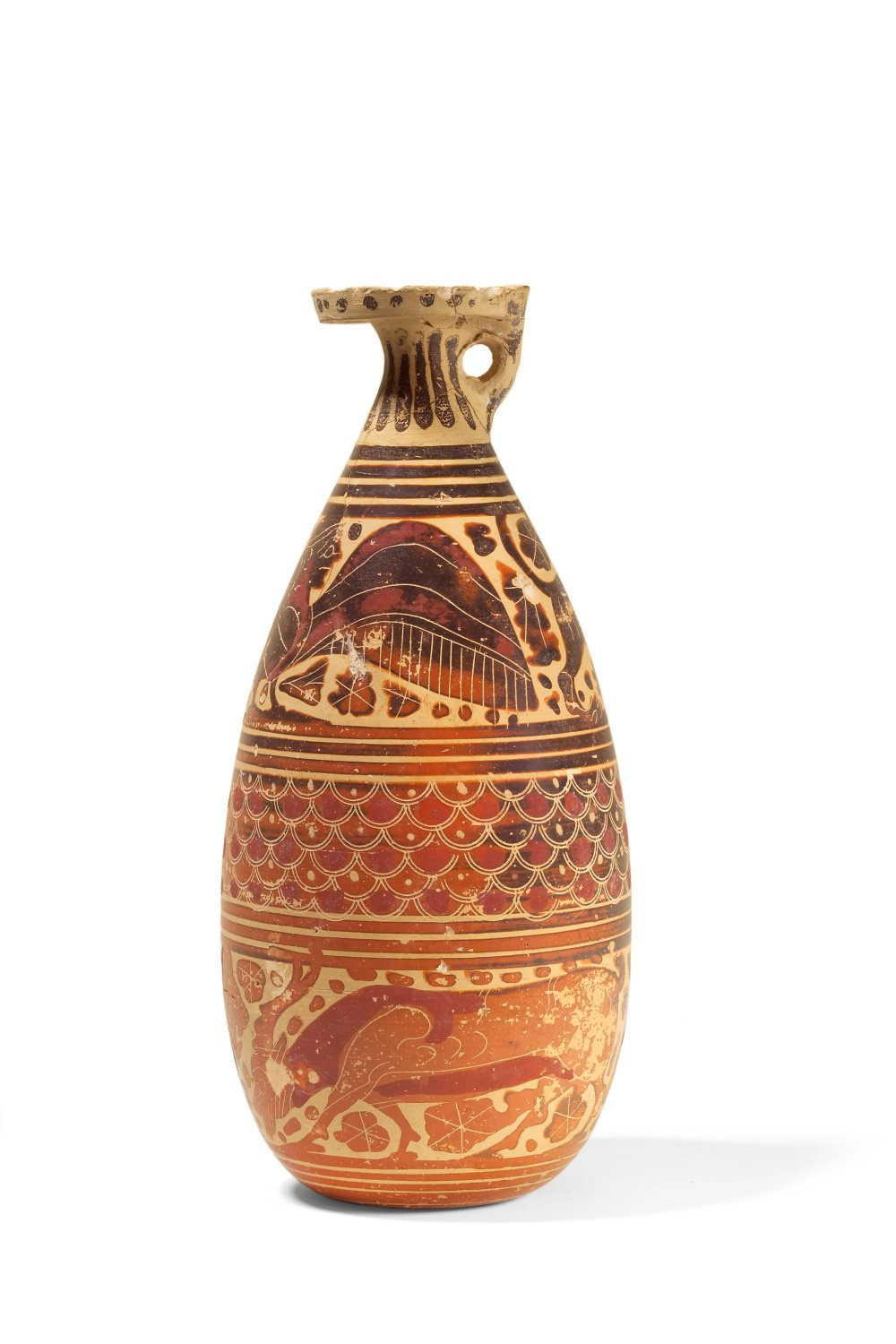Vessels that held oil, perfumes or ointments could have different shapes. The classical forms, which because of a narrow mouth only allowed the valuable contents to be poured out drop by drop, included, for example, the footless, flask-shaped vessel known as an alabastron in Greek and as a balsamarium in Roman, which sometimes had eyelets for hanging on strings.
Frequent motifs in Corinthian vase painting were various animals, often cats of prey. But mixed creatures or griffins were also popular. On the lower frieze of the Alabastron we see a lion facing a grazing buck. On the reverse side, a swan raises its wings. The upper frieze shows a siren and a panther. (AVS)
en









